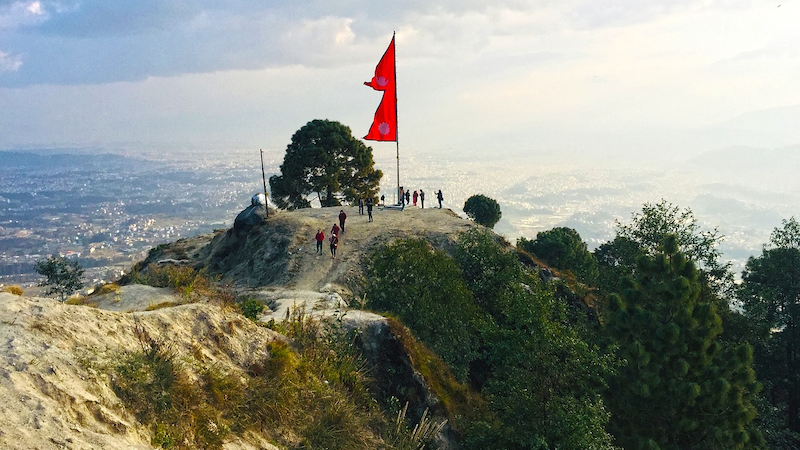
By Hari Bansh Jha
China, which has been nurturing unity among the left political parties in Nepal, seems highly satisfied with Nepal’s new political dispensation. In 2018, it not only played a crucial role in uniting the CPN-UML led by KP Sharma Oli and Maoist Centre leader Pushpa Kamal Dahal, but it also facilitated the merger between the two parties, which was renamed the Nepal Communist Party (NCP).
However, the unity between the two parties could not last long because just within three years the two erstwhile parties, i.e. the CPN-UML and the Maoist Centre were separated due to the intervention made by Nepal’s Supreme Court. On 4 March this year, Beijing again successfully brought the CPN-UML and the Maoist Centre together and enabled them to form a new coalition government. In this effort, the Maoist Centre had to sever its 15-month-long alliance with the Nepali Congress, the single largest party in Nepal, and form a new government with the CPN-UML that had withdrawn its support to Dahal in February 2023.
To woo Nepal, China;reopened;all 14 trade points with Nepal, including the Kimathanka transit point in Sankhuwasabha district for trade with Nepal. Those border points were lying closed for nearly four years following the outbreak of COVID-19 in 2020. The Nepalese traders, seasonal workers and border inhabitants living in the northern part of Nepal were affected most due to the closure of the border. Most of the border inhabitants living in Nepal’s northern region are largely dependent on the market across the border in China to meet the daily necessities of life. Commenting on this development, Chen Song, Chinese ambassador to Nepal;observed, “That will greatly boost cross-border trade and improve residents’ livelihoods and connectivity.”
In Nepal, China happens to be the largest source of;FDI. Chinese FDI in Nepal include projects like;Hongshi Shivam Cement,; Pokhara International Airport, Upper Trishuli hydropower project, and West Seti Dam. Several small shops have also been opened by Chinese investors in major tourist hubs in Nepal, including Thamel in Kathmandu and Pokhara to attract Chinese tourists. Recently, Nepal signed two memorandum of understanding (MoU) with this country on the occasion of the Third Investment Summit of Nepal Nepal (28-29 April). The first MoU was signed between Next-Gen Management Solutions Pvt Ltd of Nepal with MABC Investment Pvt Ltd of China; while the second MoU was signed between the Federation of Nepalese Industry and Commerce (FNIC) of Nepal and the Dongguan Jingliang Lighting Product Company Ltd. of China.;
In the meantime, the Tibet Autonomous Regions of China assured Nepal that it would provide funds to Nepal for five years for;building schools, health posts, solar electricity, etc. for those Nepalese living in 15 districts bordering China. Before this, China provided;US$1.53 million;annually to Nepal between 2014 and 2018 for the livelihood support of the people in northern Nepal in the health, education, and road sectors.
Furthermore, China launched a new platform known as;Silk Roadster;under the Belt Road Initiative (BRI) for Nepal. Accordingly, China is expected to launch small projects in Nepal to impart technical training, promote overseas study programmes, foster cooperation between enterprises, and organise cultural exhibitions and exchange visits. Involvement of the Nepalese;political parties and social organisations;is expected in the implementation of some of these activities.;
China also declared that it would exempt;visa fees;for the Nepalese from 1 May. It;promised;to launch commercial flights from China to;Pokhara and Bhairahwa International Airports;of Nepal. As it is well known, the Pokhara International Airport was constructed through Chinese funding worth US$216 millionand it was opened on 1 January 2023. Similarly, the Gautam Buddha International Airport in Bhairahawa was built by Chinese contractors with a loan amounting to;US$76.1 million. But both the Airports in which China was involved failed to handle international flights simply for the reasons that India did not provide air routes for such activities. Now the Nepalese have been given the impression that the air route-related issues would cease to exist as the Chinese airlines would enter and exit these airports from the northern and eastern border points of Nepal without entering into Indian space.;
Nepal signed the BRI agreement with China on 12 May 2017. In the beginning, Nepal proposed;35 projectsunder BRI, which is now reduced to;nine. Major projects under the;BRI, include Kathmandu-Kerung Railway (US$2.15 billion), Rasuwagadhi-Kathmandu Road upgradation, Kimathanka-Hile Road and Dipayal to South of China Road. Besides, Nepal also wants China to construct the Tokha-Bidur Road, Galchhi-Rasuwagadhi-Kerung 400kv Transmission Line, Tamor Hydropower Project, Madan Bhandari Science and Technology University and Phukot-Karnali Hydropower under BRI.;
In the wake of his official visit to China between 24 March and 1 April, Nepal’s Deputy Prime Minister and Foreign Minister Narayan Kaji Shrestha proposed to the Chinese to develop the;Nepal-Tibet-Chongqing-Sichuan Development Corridor;to foster economic growth and enhance connectivity between the two countries. The Chinese side also exhibited an interest in resuming the;Kathmandu-Lhasa direct bus service. Apart from this, vital agreements were signed between the two countries for forming a Joint Commission at the Foreign Minister level to discuss issues related to Nepal-China and to;finalise;the BRI Implementation Plan at the earliest.;
Over the years, China has supported Nepal in several activities ranging from education, health, culture, infrastructure development and hosts of other areas. However, never before had the two countries been as active in promoting cooperation in certain areas as seen now. Such cooperation between the two countries is bringing the two countries closer. The probability is high that under the present political dispensation, the relations between the two countries would reach a greater height especially;if all deals are carried forward in a transparent manner, be it the BRI implementation plan or other strategic issues. Such a move could safeguard Nepal’s long-term interests considering the geoeconomic and geopolitical realities in the region.
- About the author: Hari Bansh Jha is a Visiting Fellow at the Observer Research Foundation.
- Source: This article was published at the Observer Research Foundation.
